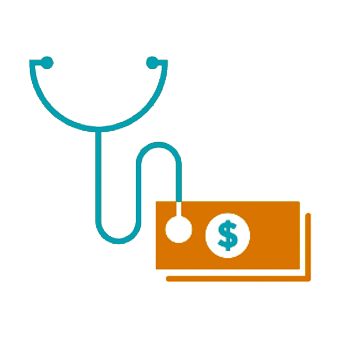This report describes the services The Hilltop Institute provided to the Maryland Department of Health (the Department) under the Master Agreement between Hilltop and the Department. The report covers fiscal year (FY) 2021 (July 1, 2020, through June 30, 2021). Hilltop’s interdisciplinary staff provided a wide range of services, including Medicaid program development and policy analysis; HealthChoice program support, evaluation, and financial analysis; long-term services and supports program development, policy analysis, and financial analytics; and data management and web-accessible database development.
In this report, Hilltop discusses the findings of its empirical studies to identify the need for developing a health information exchange solution to bridge the information gap during transitions between LTSS and acute care settings among the population of over 100,000 individuals who are dually eligible for Medicare and Medicaid in the state of Maryland.
Intentional injury (both self-harm and interpersonal) is a major cause of morbidity and mortality, yet there are little data on the per-person cost of caring for these patients. The Affordable Care Act has made Medicaid the primary payor of intentional injury care (39%) in the United States and the ideal source of cost data for these patients. This study sought to determine the total and per-person long-term cost of intentional injury among Maryland Medicaid recipients.
Senior Director of Research and Analytics/Chief Data Scientist Ian Stockwell, PhD co-authored this article published in the Journal of Trauma and Acute Care Surgery.
Senior Director of Research and Analytics/Chief Data Scientist Ian Stockwell, PhD, and Principal Data Scientists Morgan Henderson, PhD, and Fei Han, PhD were co-authors of this article published in Health Services Research (Volume 57, Issue 1).
Enacted in 2010, the Affordable Care Act (ACA) gave states the option to expand their Medicaid programs by extending eligibility to almost all adults under age 65 with income below 138% of the federal poverty level (FPL). As of December 2021, Mississippi was 1 of 12 states that has not expanded its Medicaid program. In order to provide state policymakers with the latest available evidence on the potential impact of Medicaid expansion, the Center for Mississippi Health Policy commissioned The Hilltop Institute to conduct a study on the likely effects of Medicaid expansion on Mississippi’s Medicaid program, state budget, wider economy, and providers. This report provides a summary of the study findings. A more detailed technical report is also available.
Enacted in 2010, the Affordable Care Act (ACA) gave states the option to expand their Medicaid programs by extending eligibility to almost all adults under age 65 with income below 138% of the federal poverty level (FPL). As of December 2021, Mississippi was 1 of 12 states that has not expanded its Medicaid program. In order to provide state policymakers with the latest available evidence on the potential impact of Medicaid expansion, the Center for Mississippi Health Policy commissioned The Hilltop Institute to conduct a study on the likely effects of Medicaid expansion on Mississippi’s Medicaid program, state budget, wider economy, and providers. This technical report presents the findings of this study in full detail. A summary report is also available.
Pursuant to Maryland Health-General §15-103.5 and Insurance Article §19-807(d)(2), the Maryland Department of Health (MDH) submits an annual report to the Governor and various House and Senate committees addressing the progress of the rate-setting process; a comparison of Maryland Medicaid’s reimbursement rates with those of other states; the schedule for adjusting Maryland’s reimbursement rates; and the estimated costs of implementing the above schedule and proposed changes to the fee-for-service reimbursement rates. This report, dated January 2022, satisfies these requirements for fiscal year 2021.
This annual report, written for the UMBC community, provides an overview of key projects and staff accomplishments for FYs 2020 and 2021.
In this article in the Health Affairs Forefront series, Hilltop Principal Data Scientist Morgan Henderson and Policy Analyst Morgane Mouslim discuss the federal regulation that requires hospitals to publicly post their “standard charges” in machine-readable data files. Read the article online.
This chart book explores utilization and expenditures for Medicaid-funded long-term services and supports (LTSS) in Maryland for state fiscal years (FYs) 2015 through 2019. The focus of this chart book is on Medicaid nursing facility services, with one chapter that illustrates Maryland’s efforts at providing home and community-based services (HCBS) to an increasing number of Medicaid recipients who may otherwise be served in nursing facilities.





